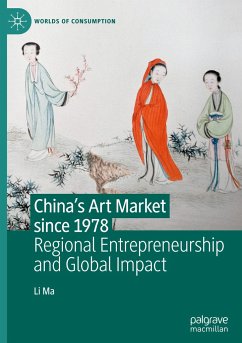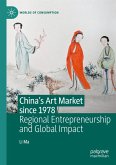This book examines the rising global prominence of China's art market throughout the twentieth and twenty-first centuries. To understand the far-reaching impact of Chinese art on global consumption, this book traces the shift from regional markets to global markets. It asks how the Chinese art market re-emerged from its politicized past, innovated within the private economy boom, remained resilient despite the global financial crisis, and flourished on the global stage despite the COVID-19 pandemic. Ultimately, it argues that cultural entrepreneurship enabled Chinese art professionals to reinvent their space and to participate in the global artworld.
Bitte wählen Sie Ihr Anliegen aus.
Rechnungen
Retourenschein anfordern
Bestellstatus
Storno








